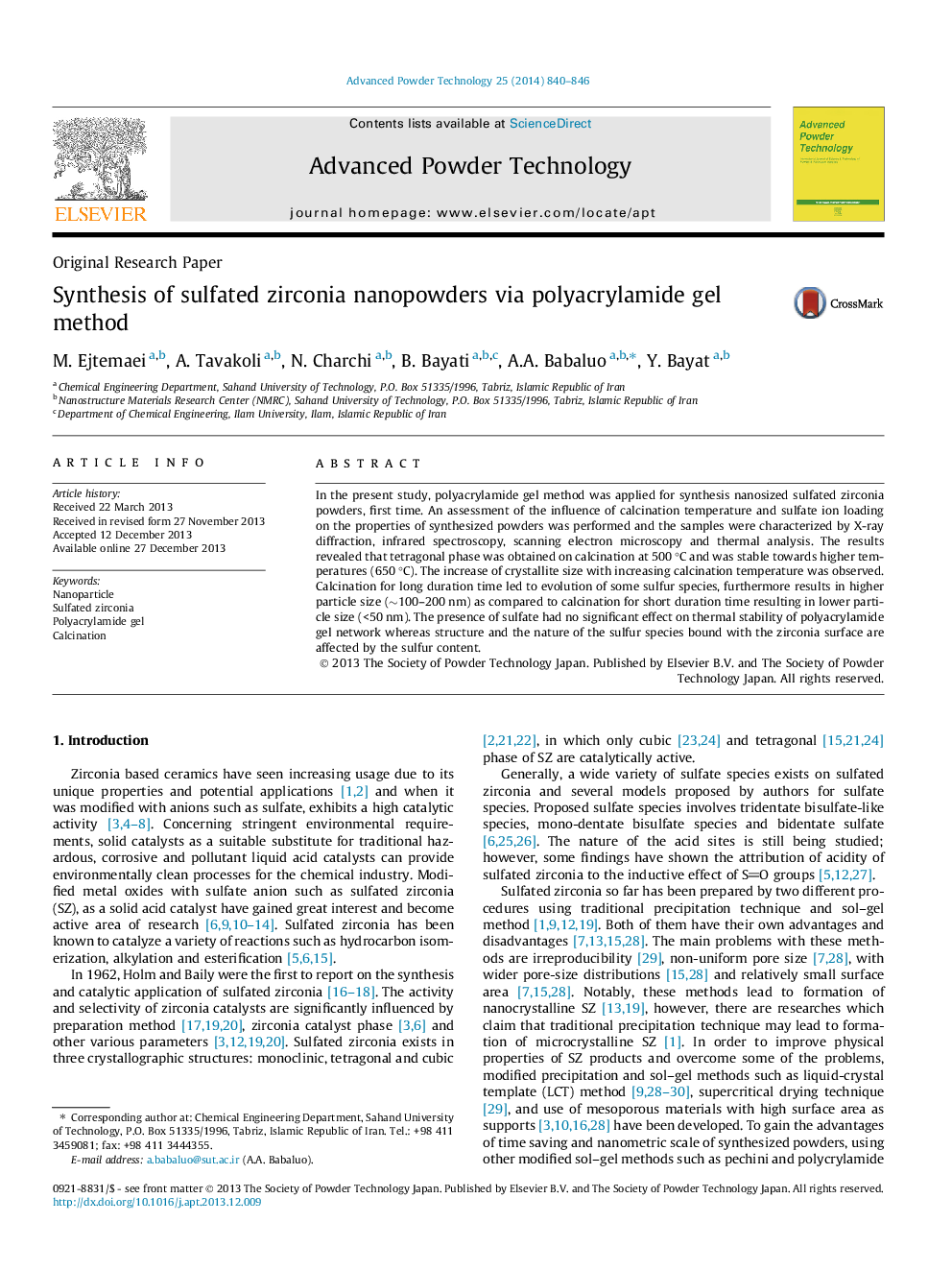| Article ID | Journal | Published Year | Pages | File Type |
|---|---|---|---|---|
| 144834 | Advanced Powder Technology | 2014 | 7 Pages |
•SZ nanoparticles (<50 nm) were first synthesized via polyacrylamide gel method.•Powders calcined at 500–650 °C showed only tetragonal crystalline phase.•The presence of sulfate ion has no effect on thermal decomposition of gel network.•Samples prepared with low acid amounts have been aggregated (particle size ∼3 μm).•Evolution of sulfur species were observed under calcination for long duration time.
In the present study, polyacrylamide gel method was applied for synthesis nanosized sulfated zirconia powders, first time. An assessment of the influence of calcination temperature and sulfate ion loading on the properties of synthesized powders was performed and the samples were characterized by X-ray diffraction, infrared spectroscopy, scanning electron microscopy and thermal analysis. The results revealed that tetragonal phase was obtained on calcination at 500 °C and was stable towards higher temperatures (650 °C). The increase of crystallite size with increasing calcination temperature was observed. Calcination for long duration time led to evolution of some sulfur species, furthermore results in higher particle size (∼100–200 nm) as compared to calcination for short duration time resulting in lower particle size (<50 nm). The presence of sulfate had no significant effect on thermal stability of polyacrylamide gel network whereas structure and the nature of the sulfur species bound with the zirconia surface are affected by the sulfur content.
Graphical abstractFigure optionsDownload full-size imageDownload as PowerPoint slide
